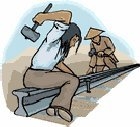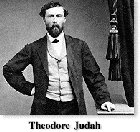
Worksheets and No Prep Teaching Resources
Reading Comprehension Worksheets
The United States Grows
(1865-1900)

The United States Grows
(1865-1900)
 Worksheets and No Prep Teaching Resources Reading Comprehension Worksheets The United States Grows (1865-1900) |
 The United States Grows (1865-1900) |
| edHelper's suggested reading level: | grades 7 to 9 | |
| Flesch-Kincaid grade level: | 5.88 |
|
Rails across America - The Beginning
By Toni Lee Robinson |

|
 1 How many times have we sighed "Are we there yet?" Long trips can make us long for the end of the road. These days, planes and automobiles make short work of long distances. Until 1869, going somewhere could be a long and daunting job.
1 How many times have we sighed "Are we there yet?" Long trips can make us long for the end of the road. These days, planes and automobiles make short work of long distances. Until 1869, going somewhere could be a long and daunting job. |
Create Weekly Reading Books
Prepare for an entire week at once! |
| Leave your feedback on Rails across America - The Beginning (use this link if you found an error in the story) |
 |
The United States Grows (1865-1900) |
 |
High School Reading Comprehensions and High School Reading Lessons
|
 |
United States
|
|
|
 | Fifty States Theme Unit |
 |
Document Based Activities |